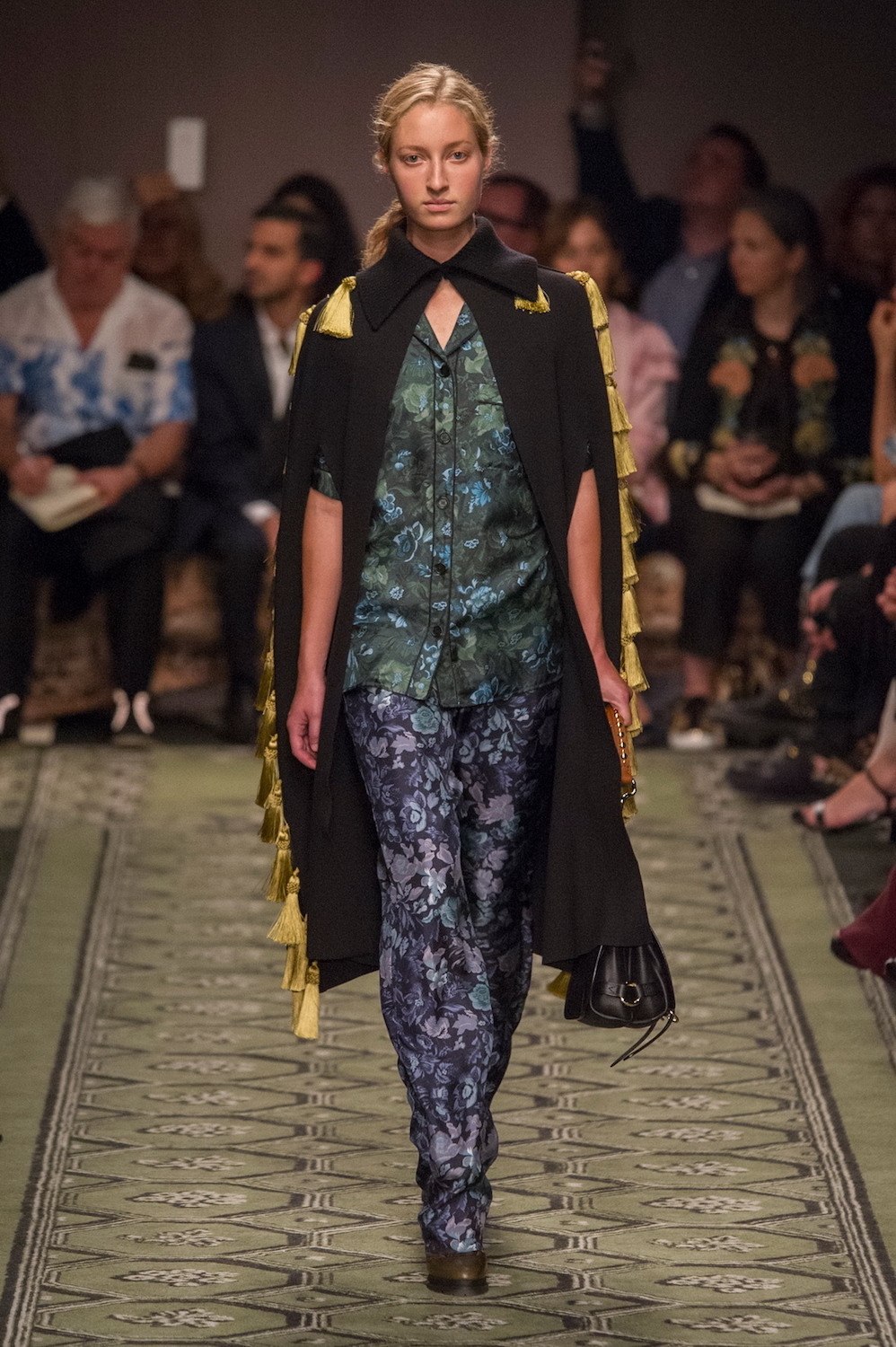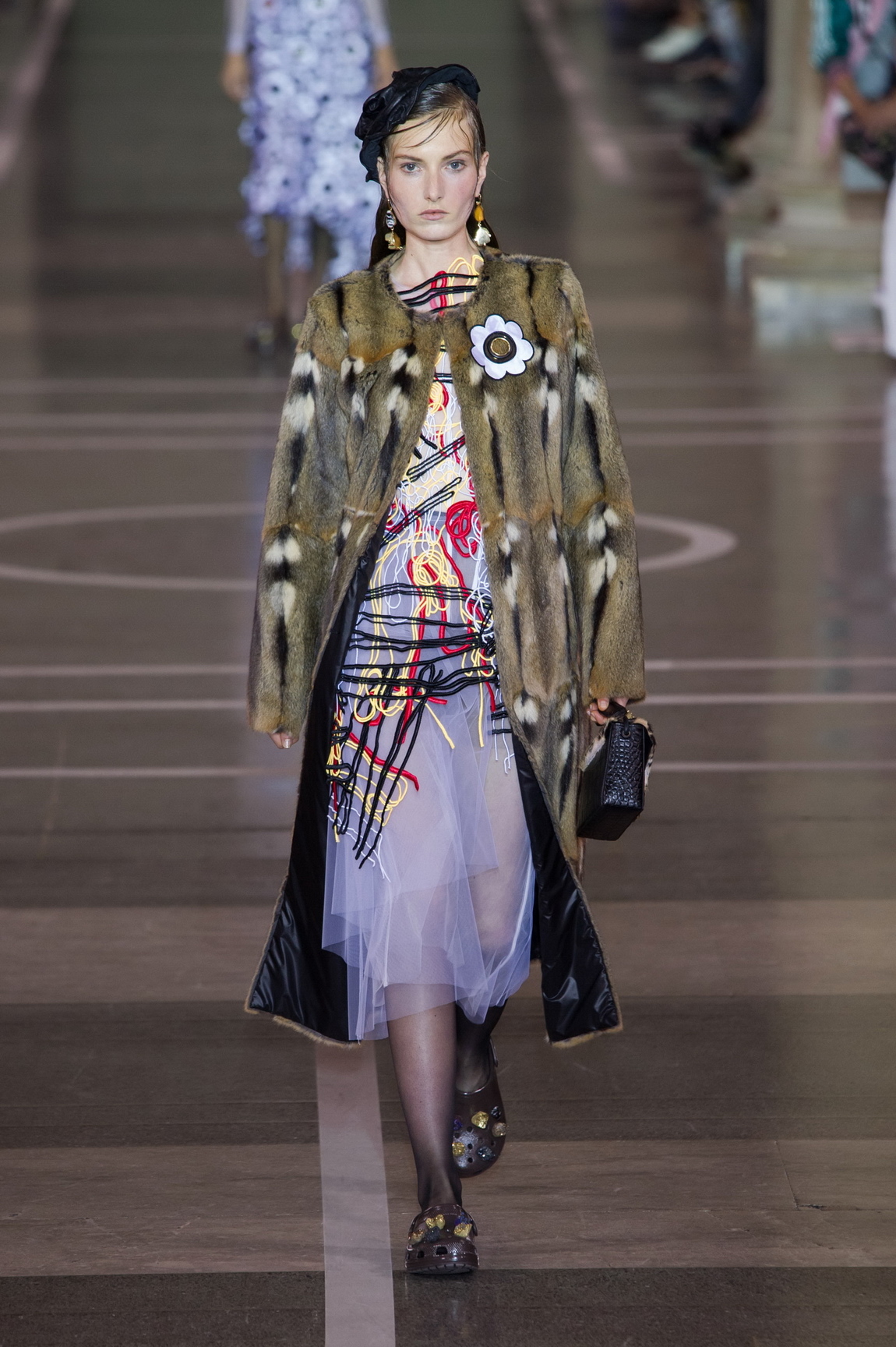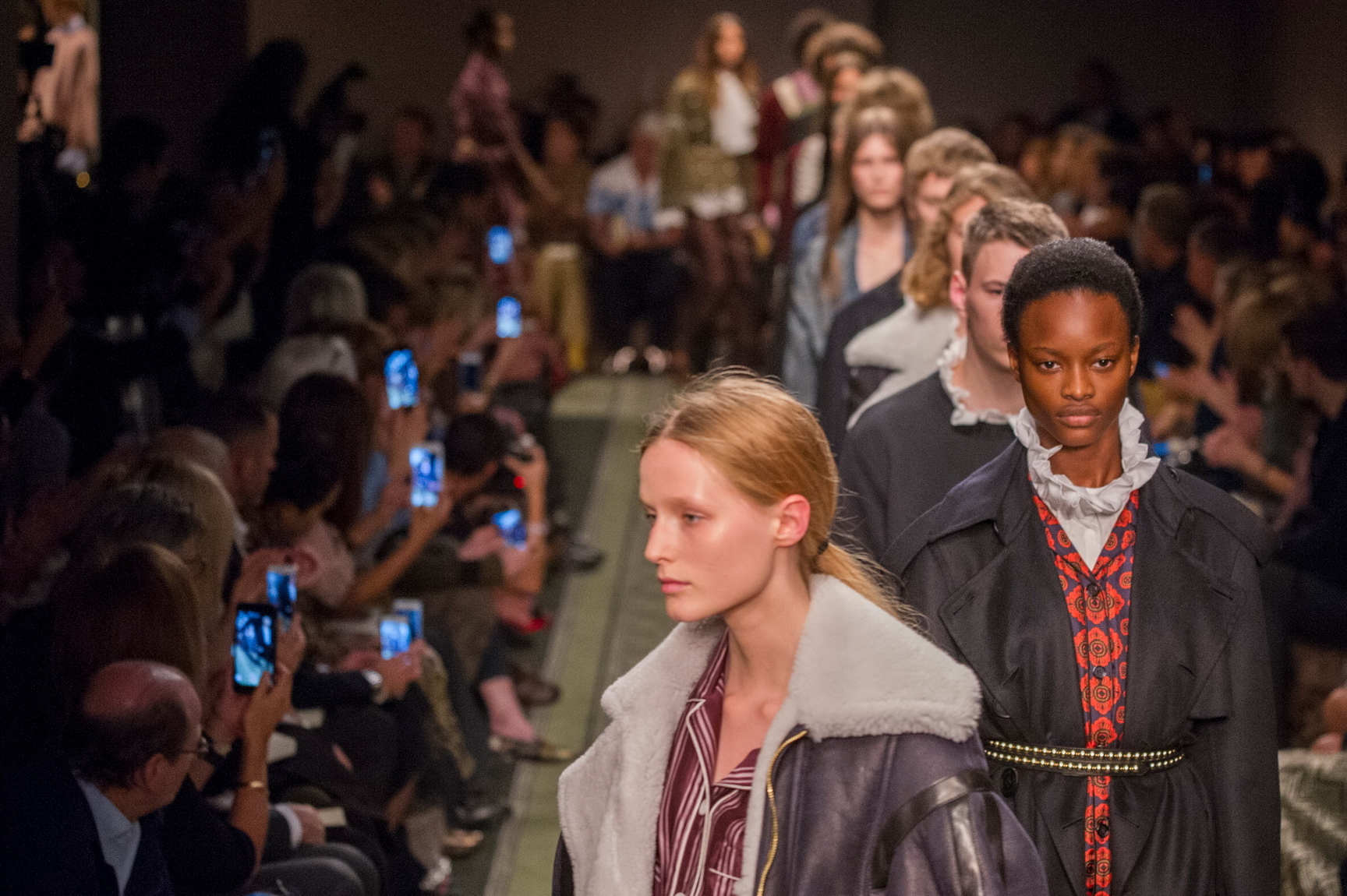Traveling through time is felt nowhere stronger than in fashion where you’re faced with new creation every six months at the shows. In with the new, out with the old — well, sort of. Monday’s Burberry Prorsum show at London Fashion Week marked the powerhouse’s transition into see-now-buy-now and the merger of its women’s and men’s shows into one big season-less offering. It was Burberry’s giant leap into the future as a commerce frontrunner for an industry, which could soon adopt the same format across the board, but Christopher Bailey wasn’t about to give in to soulless consumerism. Brilliantly, his foray into the future — presented in the salons of Makers House in Covent Garden, miles away from Burberry’s Kensington Palace Garden mega tents of yesteryear — looked back in order to look forward. Based on Virginia Woolf’s Orlando, the book about a man who morphs into a woman and lives for centuries, Bailey’s collection travelled through British history, with all the ruffle collars and floral tapestries and cavalry uniforms a boy (or a girl) could wish for. Accompanied by a 21-piece orchestra, a pianist and vocalists performing an epic score entitled “Reliquary” composed especially for the show by Ilan Eshkeri, it was an overwhelmingly breathtaking experience — a bit like the first time you watch Stanley Kubrick’s Barry Lyndon or Peter Duffell’s King of the Wind, you couldn’t not surrender to the sheer sensory overload of all that history and grandeur and emotion. It was Bailey’s best collection in years, perhaps ever. If this is what see-you-buy-now looks like, fashion will be okay.

Erdem Moralioglu is fashion’s Orlando, only without the sex change. His collections travel through history, retelling stories otherwise forgotten and feeding his formidable narrative in an ongoing story, which, once completed many decades from now, will become one of the great tales of our time — as told through fashion. It doesn’t get more future-forward than that, but like Bailey, Erdem expresses himself best through the past. This season he had become obsessed with last year’s shipwreck discovery of a gown that belonged to Jean Ker, Countess of Roxburghe, who accompanied the daughter of Charles I to the Netherlands in 1642 to join her new husband, William II, the Prince of Orange, on a fleet of twelve ships, part of which sank. All this history, and Erdem hadn’t even begun. He related that story to another war era, the 1930s, imagining an army of women landing on the beach of Deauville about to go into battle. “I like the idea that they survived and they arrived. 300 years later her army of women landed,” Erdem said, referring to the Countess and her fellow ladies of the court. “When you think about the 1650s it kind of equals the 1930s. They were about to enter a very dark phase.” If it sounds mad, it definitely was — a lot like the captivating oddity of Orlando, come to think of it, and it wouldn’t be the first time someone compared Erdem to Virginia Woolf. He staged the whole thing in a boardwalk set with the crushing of waves sounding in the background, and the clothes that landed on his beach were pure magic: “nipped-in jacket with these Deauville-y cropped trousers and odd sun hats,” as he described them.

But there were also the enchanting and entrancing dresses that fill Erdem’s dreams — much like the one recovered from the ship that sank with Ker’s wardrobe — fusing 17th century splendor with 1930s modesty. A sense of magic has been key to these few days of London shows. For Erdem, that theme was a walk in the park — or rather on the boardwalk. Celebrating ten years in business, Christopher Kane drew a parallel between the make-do and mend mentality of World War II and his early beginnings, scraping together whatever he could find to create the fashion that made him the first revered designer of a new generation of London fashion. “I’ve always had that ethos of make-it-work. I don’t need expensive fabrics, I don’t need anything. I can make it work. So it was a really nice nod to that,” Kane said after the show. “And I was thinking about those wartime women, who were really strict but tried to maintain their glamour.” The collection was comprised of greatest hits elements, delighting guests with blasts from Kane’s past, but it retained that wartime strictness he was referring to, albeit in rather more luxurious adaptations. “The Recession marked a pretty good time for us because we actually did create business during the Recession, so in terms of the whole wartime reference you can really go out and grab it,” Kane told the horde of journalists surrounding him after the show, many of whom he’s known since his graduate show ten years ago.

At Pringle of Scotland, Fran Stringer — who got off to a flying start with her acclaimed debut for the oldest fashion house in the world last season — nailed her sophomore collection, a notoriously difficult thing to nail, by continuing her slow and steady exploration of Pringle’s 200-year history and her deconstruction of its most famous invention, the twin set. Her mood board had an old photo on it of a Scottish highlander wrapped in a tartan scarf used by shepherds to hold their sheep if they needed to carry them. Stringer fed that idea into architectural wrap dresses, which had a decidedly sporty feel about them. It was her way of working the knitwear core of Pringle into a summer wardrobe, expressed in stripes and ribs and many a nod to the house’s undergarment heritage, all of which Stringer has only just begun to explore. “Being new to the brand, there’s almost no point in me looking ahead straight away. I want to define the aesthetic and the girl and the mood and the spirit before I move forward,” she said backstage. “I guess there’s never anything new anymore, so it’s just wonderful to revisit things that happened in the past and interpret them more.” On the day that launched a new era of see-now-buy-now at Burberry, Stringer’s remark could be the tagline for a give-and-take future of fashion. Now go shop.

Credits
Texts Anders Christian Madsen
